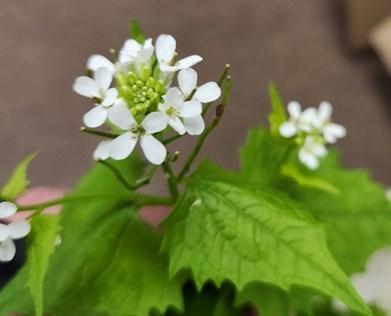Updated: February 12, 2024
A Guide for Identifying Pigweed Species Commonly Found in Maryland (EB-2023-0654)
This hand-held guide provides information on how to identify and differentiate common pigweed species in Maryland including: Palmer amaranth, Spiny amaranth, waterhemp, and redroot/smooth pigweed. Authors: Kurt Vollmer and Ben Beale; Title: A Guide for Identifying Pigweed Species Commonly Found in Maryland (EB-2023-0654)
Updated: October 4, 2023
Keys to Identifying Palmer Amaranth and Waterhemp (FS-2023-0653)
Pigweeds are annual weeds that can cause significant problems for Maryland farmers. Palmer amaranth and waterhemp are two pigweeds that are especially troublesome, and have been designated as noxious weeds by the Maryland Department of Agriculture. Therefore, it is required that these two species be actively managed to prevent their spread and resulting negative impacts on Maryland agriculture. To the untrained eye, Palmer amaranth and waterhemp can appear similar to each other and to other pigweed species. However they can be easily distinguished from one another by looking at some key botanical characteristics. Becoming familiar with these species allows for earlier detection, and as a result, improved management practices. Authors: Kurt Vollmer, Ph.D., and Ben Beale; Title: Keys to Identifying Palmer Amaranth and Waterhemp (FS-2023-0653)
Updated: July 25, 2023
Managing Herbicide Resistant Common Ragweed (FS-474)
Common Ragweed (Ambrosia artemisiifolia) is a native summer annual weed of many cropping systems in the mid-Atlantic. It is often encountered as weed in agronomic crops as well as vegetable, orchards, roadsides, and abandoned fields. Common ragweed can thrive in lower fertility soils and is often more severe in reduced or no-tillage situations. In Maryland, populations of glyphosate resistant common ragweed were first confirmed in 2014. Resistance to ALS herbicides was also confirmed the same year. In most areas of Maryland, common ragweed has two-way resistance to both glyphosate and ALS chemistry. In 2017, pockets of three way resistant common ragweed plants were confirmed in parts of Delaware and the Eastern Shore of Maryland to PPO, ALS and glyphosate. Herbicide resistant common ragweed can be very difficult to control in agronomic crops, particularly soybeans. Authors: Benjamin Beale, and Matthew Morris; Title: Managing Herbicide Resistant Common Ragweed (FS-474)
Updated: May 30, 2023
Know Your Foxtails (FS-2023-0658)
Yellow, green, and giant foxtail are the three most common weedy foxtail species in Maryland. Knowing the differences between foxtail species and look-alike grassy weeds can assist with identification, and the selection of effective weed management strategies. Title: Know Your Foxtails (FS-2023-0658); Authors: Dwayne D. Joseph, and Leo Kerner
Updated: May 2, 2022
Palmer Amaranth in Maryland
Palmer amaranth, Amaranthus palmeri, is a new invasive weed in the pigweed family that has become a major challenge for farmers across the U.S. for much of the last decade. Native to the Sonora Desert of Arizona and Northern Mexico, Palmer amaranth is well adapted to the hot Maryland summers. It was first discovered in Maryland during the mid-twentieth century, but the presence of herbicide resistant Palmer amaranth was not confirmed until 2014. Since then it has spread to most regions of the state including Eastern, Southern, and Western Maryland. The spread of Palmer amaranth has been hastened by the movement of contaminated equipment, feed, and seed from infested areas.


